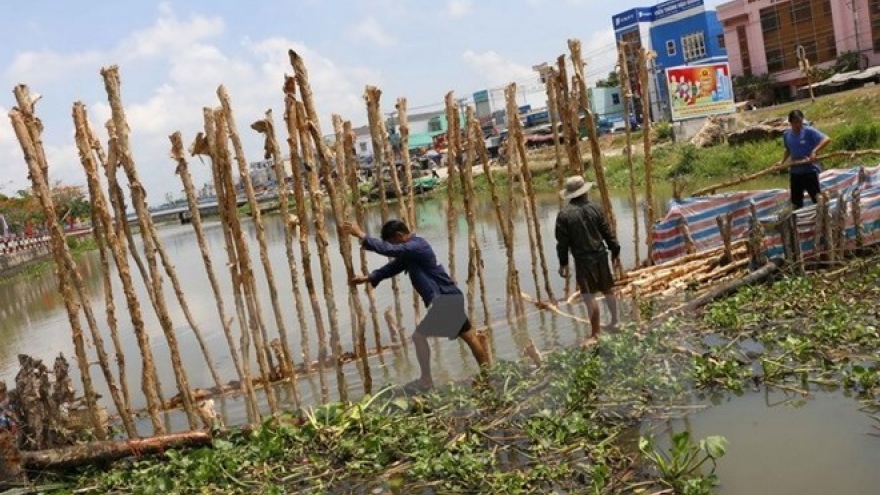Rice area to be expanded to make up for drought-induced losses
The Mekong Delta’s rice area in the autumn-winter crop this year needs to be expanded to make up for losses in the recent crops triggered by drought and saltwater intrusion, agriculture officials said.
 |
Both rice area and output of the last winter-spring and summer-autumn crops declined. Hence, the rice area in the autumn-winter crop should be increased to compensate for the output, Deputy Minister of Agriculture and Rural Development Le Quoc Doanh said at a meeting in the Mekong Delta province of An Giang on June 22.
He promised financial support for the regional provinces to cultivate the autumn-winter crop. He also told local officials to pay special attention to reinforcing dykes and not be subjective though the Mekong Delta hasn’t recorded floods for many years.
Rice seeds should be sown in late July and early August, while high-quality varieties and safe pesticides are necessary for rice to meet export standards, he added.
Doanh requested the localities to comply with the cultivation schedule so that the following winter-spring crop will not be affected.
Duong Quang Xo from the Institute of Water Resources Planning asked the Mekong Delta provinces to store water to prepare for the winter-spring crop between 2016 and 2017.
Nguyen Van Hoa, Deputy Director of the agriculture ministry’s Crop Production Department, said the prolonged drought and saltwater intrusion in the south of Vietnam have heavily influenced the summer-autumn crop.
Over 1.6 million ha of rice were grown in the Mekong Delta this crop, generating nearly 9.2 million tonnes of unhusked rice, down some 5,300 tonnes from the same crop of 2015, he added.
In the autumn-winter crop, the delta is expected to cultivate 867,300 ha of rice and yield over 4.8 million tonnes of unhusked rice, rising by 24,100 ha and 220,300 tonnes, respectively, from the previous crop, according to the Crop Production Department.


